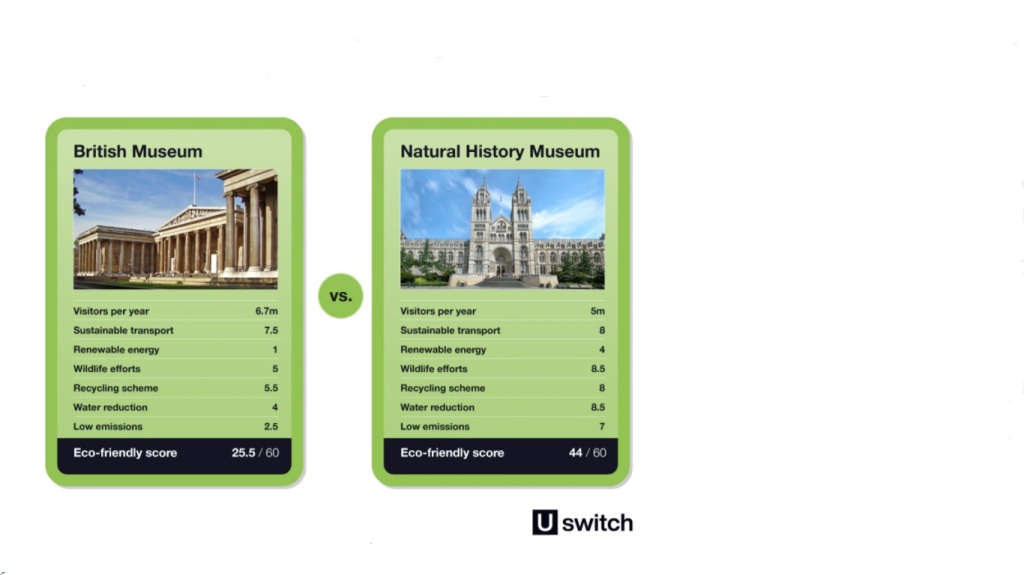Europe’s Most Eco-friendly Tourist Attraction revealed
Posted: October 22, 2020 Filed under: Sustainability, Travel | Tags: eco-friendly, green European attractions, museum, natural history museum, Sustainability, tourist attraction Leave a comment
In a world where we need to reduce waste, embrace renewable resources and lighten our carbon footprint, which European tourist attraction is making the biggest commitment to sustainability?
The energy team from Uswitch analysed 27 of the world’s most-visited tourist attractions and ranked them based on eco-friendly credentials such as water reduction, emissions, sustainable travel, re-wilding efforts and renewable energy.
From best to worst, these are the European tourist attractions with the most commitment to sustainability:
- Natural History Museum – 44/60
- Eiffel Tower – 42.5
- Disneyland Paris – 42
- Efteling Theme Park – 39
- The Vatican – 37
- Tivoli Gardens – 36.5
- Alton Towers – 35.5
- LEGOLAND Windsor – 32
- National Gallery – 31.5
- Tower of London – 26.5
- British Museum – 25.5
- London Eye – 17
- La Sagrada Familia – 16
The Natural History Museum in London scored top marks for its eco-friendly credentials, having the highest consciousness when it comes to its impact on the environment. In 2019, the museum had successfully reduced its total greenhouse gas emissions by 5%, making its carbon footprint 10,139 tonnes.
The museum is equipped with a trigeneration energy centre that generates most of the energy used by the museum – which has saved more than 15,000 tonnes of carbon dioxide since installation.
But it doesn’t stop there – throughout the building and onsite cafes, the museum has implemented recycling schemes to help reduce waste. And the National History Museum is undertaking a host of measures to help reduce water consumption, including sensor-controlled taps and dual-flush cisterns fitted into toilets.
No fate of the dinosaurs, then for the museum thanks to its eco cred.
What you can do to help the planet here.
